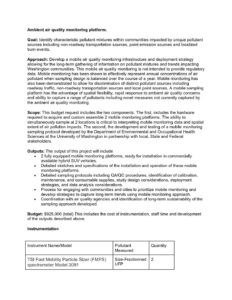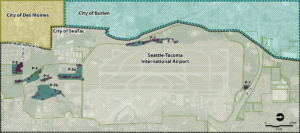Topographic Map is a free Internet site that aggregates content from ESRI and OpenStreetMaps to create heat maps for given areas. This particular image shows the plateau (partially man-made) on which the airport sits.
Flight Corridor Safety Program On-line Open House
The Port of Seattle has an ongoing program to remove trees around SEA to improve safety during takeoffs and landings and replant in their place, native, low-growing trees. The first phase of work, completed in 2019, centered around removing and replanting trees on Port property. During this phase, the Port established low-growing native forests onsite
Washington Tracking Network
Welcome to WTN, a Washington State Department of Health program focused on making public health data more accessible. WTN staff keep data in all tools up to date and develop additional data based on need and availability. Data are available for download and exploration using our four tools.
UW DEOHS Ambient air quality monitoring platform

How to Appeal the Assessed Value of Your Property
Port Of Seattle – Cargo Statistics
Total air cargo 425,856 metric tons (2017) Ranked 19th in air cargo volumes in North America (ACI rankings-2017) Search Traffic and Operations Reports
Therma-Stor Fresh 80 Replacement Filters
If you have a Port Package, these are replacement filters for Fresh 80 vents.
Therma-Stor Fresh 80 Air Filters
If you have a Port Package, you likely have these air filters in two spots in your house. Many people have no idea what they do, but they are important to the health of you and your Port Package and your house so you should learn how they work. First of all, you should change
S.3094 – Airport Noise and Capacity Act of 1990 (ANCA)
The full text of the 1990 ANCA bill S.3094. To get a clear understanding of what the law is really about, one should look at the House version described in the Budget Resolution HR 5835 where it is referred to as the “Aviation Safety and Capacity Expansion Act”. S 3094 IS 101st CONGRESS 2d
Request for Proposal: Study of the Current and Ongoing Effects of the Operation of Seattle-Tacoma International Airport
The Washington State Department Of Commerce is initiating this Request for Proposal (RFP) to solicit proposals from firms interested in participating in a project to study the current and ongoing effects of the operation of Seattle-Tacoma International Airport and report those findings to the Washington State Legislature. The Washington State Legislature formally asked Commerce on
